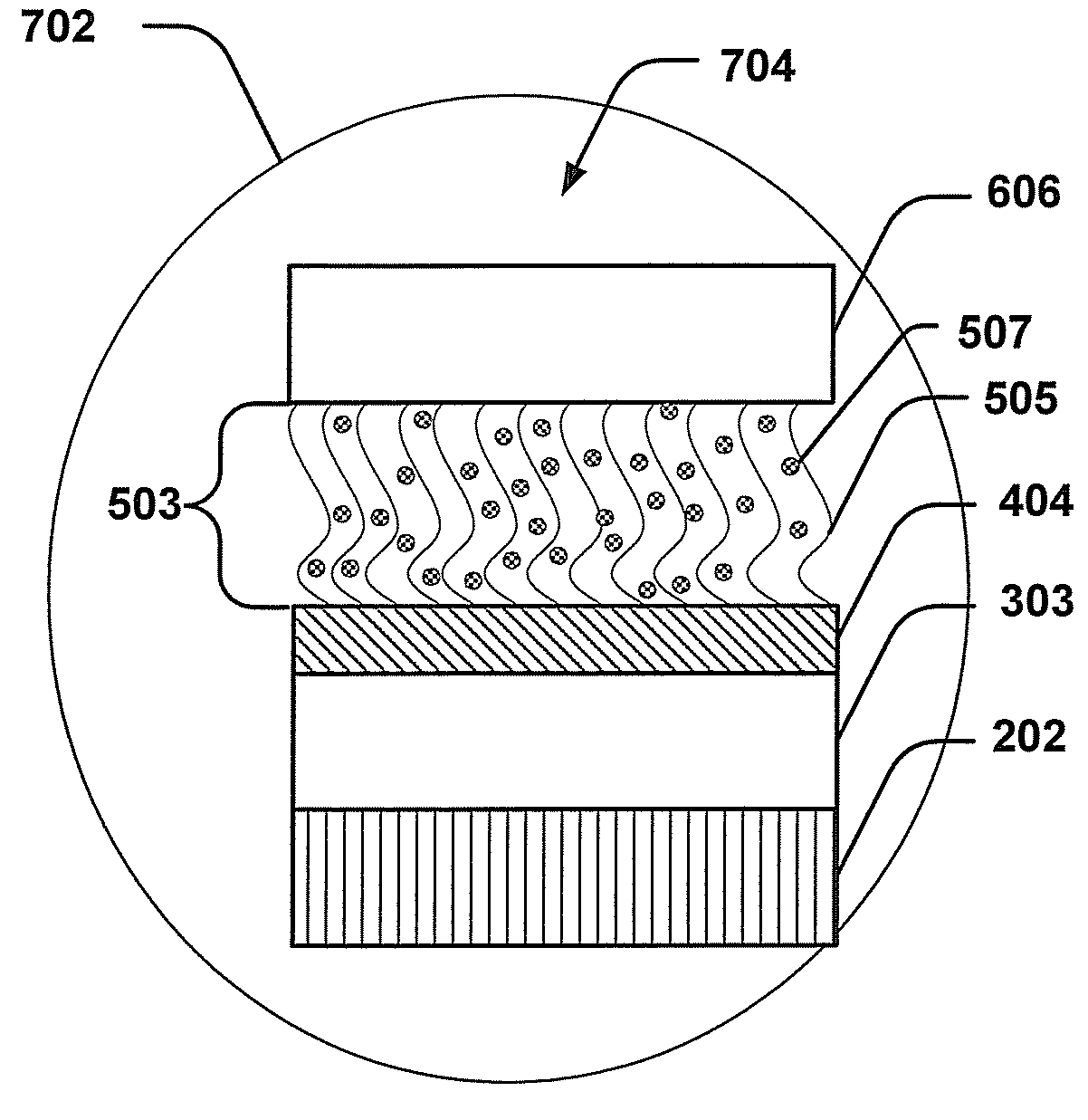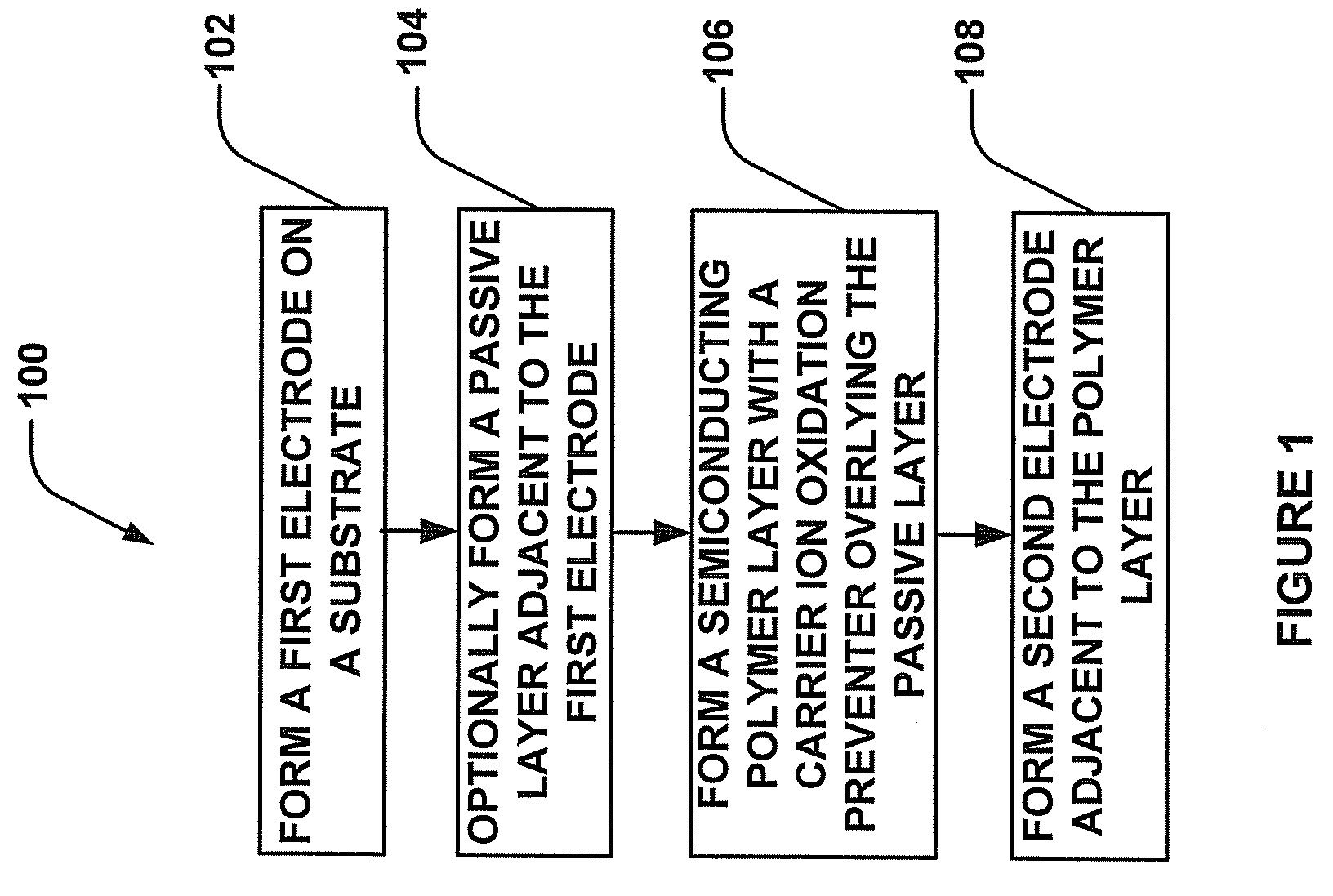Prevention of oxidation of carrier ions to improve memory retention properties of polymer memory cell
a memory cell and carrier ion technology, applied in the field of memory cells, can solve the problems of high cost and data storage density loss, high electric power consumption, and the fundamental physical size limit of silicon based devices, and achieve the effects of improving the memory retention properties of polymer memory cells, prolonging the polymer memory retention time, and increasing the usefulness of polymer memory
- Summary
- Abstract
- Description
- Claims
- Application Information
AI Technical Summary
Benefits of technology
Problems solved by technology
Method used
Image
Examples
Embodiment Construction
[0014]The subject invention involves a method for mitigating, preventing, and / or delaying oxidation of carrier ions injected into the semiconducting polymer layer of a polymer memory cell from a passive layer or one of the electrodes. Alternatively or additionally, the subject invention involves a method for mitigating, preventing, and / or delaying oxidation of one or both of the electrodes.
[0015]The method includes forming a first electrode over a substrate, optionally forming a passive layer adjacent to the first electrode, and forming a semiconducting polymer layer comprising one or more semiconducting polymers and a carrier ion oxidation preventer. Examples for the carrier ion oxidation preventer include: 1) a polymer with oxidizable side-chain groups, 2) an oxygen scavenger, 3) an oxidizable compound, and 4) an antioxidant. The carrier ion oxygen preventer permits mitigating, preventing, and / or delaying of the oxidation of carrier ions injected into the semiconducting polymer la...
PUM
 Login to View More
Login to View More Abstract
Description
Claims
Application Information
 Login to View More
Login to View More - R&D
- Intellectual Property
- Life Sciences
- Materials
- Tech Scout
- Unparalleled Data Quality
- Higher Quality Content
- 60% Fewer Hallucinations
Browse by: Latest US Patents, China's latest patents, Technical Efficacy Thesaurus, Application Domain, Technology Topic, Popular Technical Reports.
© 2025 PatSnap. All rights reserved.Legal|Privacy policy|Modern Slavery Act Transparency Statement|Sitemap|About US| Contact US: help@patsnap.com



